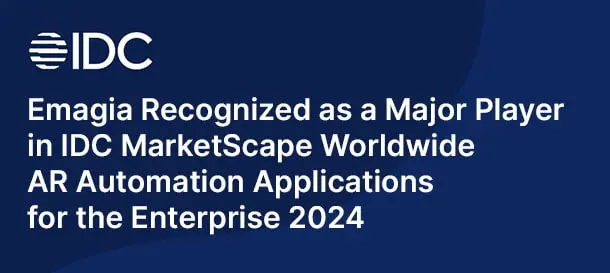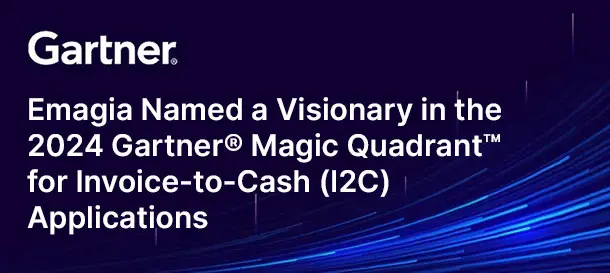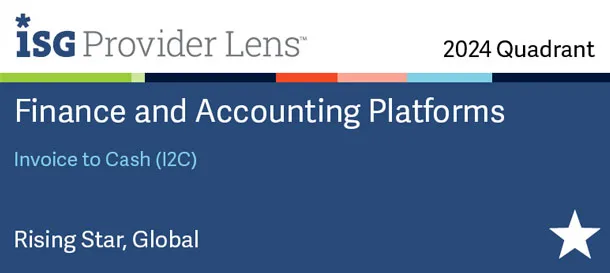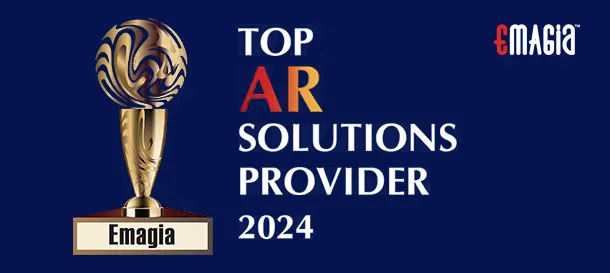E-invoicing and payment automation are becoming central to finance operations in 2026. As CFOs evaluate digital transformation, understanding the key e-invoicing trends 2026 and payment automation 2026 is essential to build efficiency, compliance and working capital optimization into the finance function.
Understanding E-Invoicing and Payment Automation
Electronic invoicing, or e-invoicing, refers to the structured, digital creation, transmission and receipt of invoices using machine-readable formats and secure platforms. Payment automation complements this by enabling invoice-to-pay automation, automated payment workflows and reconciliation without manual intervention.
When applied together, e-invoicing and payment automation transform the entire finance lifecycle. They reduce manual data entry, eliminate delays, and provide real-time invoice processing and electronic payment execution. For CFOs, this means faster cycle times, improved cash flow visibility and stronger control over financial operations.
Why E-Invoicing and Payment Automation Matter for CFOs
For CFOs, the finance agenda in 2026 includes risk management, working capital optimization and regulatory readiness. Digital invoicing automation intersects all these priorities. Real-time tax reporting and compliance, error reduction in e-invoicing, and automation ROI for payment and invoicing processes now rank among the key performance measures for finance leaders.
Payment automation 2026 supports better supplier management, shorter payment cycle times, and enhanced vendor relationships. When e-invoices are processed automatically and payments executed instantly, CFOs gain confidence in their organisation’s financial agility and transparency.
Major Trends in E-Invoicing Automation for 2026
AI-Powered Invoicing Automation
AI-powered invoicing automation uses machine learning for invoice-data capture, validation and error detection. Instead of manual review, smart systems flag anomalies, validate compliance and prepare invoices for payment automatically.
Finance teams applying AI in payment reconciliation experience fewer exceptions and faster approvals. This trend is rapidly advancing, making it one of the top e-invoicing automation trends CFOs must watch in 2026.
Blockchain and Smart Contracts for Payment Automation
Blockchain in e-invoicing and smart contracts for payment automation are emerging technologies that build trust, transparency and automation into invoice-to-pay workflows. Transactions become immutable, audit trails become inherent, and payments can trigger automatically once contractual conditions are met.
For CFOs, the appeal lies in reducing intermediaries, lowering friction and ensuring compliance across global operations. These technologies support strategic finance automation initiatives and enable digital transformation at scale.
Global Adoption of Mandatory E-Invoicing Regulations
The global regulatory landscape is shifting dramatically. Electronic invoicing mandates are being introduced in many jurisdictions and business models must adapt. A recent survey found that 80 % of companies are confident they will meet the 2026 e-invoicing mandates.
CFOs must factor e-invoicing compliance 2026 into their technology and process roadmaps. Whether it is structured invoicing in Europe or real-time tax reporting in other regions, the checklist for CFOs must reflect these mandates and the need for global readiness.
Real-Time Invoice Processing and Cloud-Native Solutions
Real-time invoice processing offers immediate data capture, matching and settlement. Coupled with cloud-based invoice processing solutions, organisations can scale quickly, support remote finance teams and integrate with other digital workflows.
Cloud-native e-invoicing solutions also simplify updates, support global mandates and combine with AI to automate decisioning. For CFOs focusing on payment automation 2026, cloud platforms are now a strategic enabler of agility and compliance.
Machine Learning-Driven Invoice Validation & Payment Reconciliation
Machine learning for invoice validation and AI in payment reconciliation reduces error rates, automates deduction management and improves financial insight. Predictive models can flag likely payment exceptions and drive proactive resolution.
By leveraging these systems, finance teams transition from reactive to proactive. CFOs lead this shift, using intelligent automation for AP/AR integration and improved working-capital efficiency.
Sustainable and Paperless Billing Transformation
Sustainability is increasingly influencing finance operations. Digital invoicing automation supports paperless billing, reduces printing and mailing costs and aligns with corporate ESG objectives. Electronic formats provide audit-friendly records and eliminate storage overheads.
For CFOs, integrating sustainability with payment automation initiatives reinforces corporate responsibility while delivering operational cost savings.
Compliance, Regulation and Risk Management in E-Invoicing Automation
Regulatory pressures shape e-invoicing and payment automation strategies. Governments are mandating digital invoice formats, structured data exchange and real-time tax reporting. For example, some countries apply stiff penalties for non-compliance.
CFOs must govern risk by ensuring invoice-to-pay workflows meet legal requirements, maintain audit trails, enable data integrity and support automated reconciliation. Risk and compliance management in e-invoicing is no longer a back-office issue—it is a board-level concern.
AI-Powered Invoicing Automation and Intelligent Workflows
In 2026, AI-powered invoicing automation is a cornerstone of modern finance for CFOs. Through machine learning, invoice data capture automation replaces manual entry, enabling real-time invoice validation, error reduction in e-invoicing, and streamlined workflows.
Machine learning models monitor invoice formats, supplier behaviours, and payment patterns to detect anomalies or unusual terms. Instead of waiting for exceptions, finance teams act proactively, mitigating risk before it impacts cash flow.
Invoice Data Capture Automation Leveraging AI
Rather than manually keying in invoice details, AI engines now ingest unstructured documents, extract key fields automatically, validate them, and route them for approval or payment. This accelerates the invoice-to-pay cycle and reduces human error significantly.
For CFOs, this means fewer bottlenecks, improved accuracy and faster access to actionable data for cash-flow forecasting and strategic decision-making.
Error Reduction in E-Invoicing with Machine Learning
Error reduction in e-invoicing is no longer optional—it is a strategic imperative. With machine learning for invoice validation and payment reconciliation, organisations are detecting duplicate invoices, incorrect tax codes, supplier mismatches and other exceptions well before clearance.
By improving quality at the front end, CFOs free up finance resources to focus on value-add tasks rather than corrections and rework.
Blockchain, Smart Contracts and Next-Gen Payment Automation
Blockchain in e-invoicing and smart contracts for payment automation are emerging trends for 2026. These technologies embed trust, transparency and automation into the invoice-to-pay workflow.
Smart contracts trigger payment once predefined conditions are met—eliminating manual sign-offs and approval delays. For CFOs, this means more predictable payments, fewer disputes and enhanced audit-ready records.
Smart Contracts for Automated Payments
With smart contracts, once an invoice matches the conditions (delivery confirmation, invoice validation, approval), payment is executed automatically. This reduces payment cycle times through automation and improves supplier relationships.
Finance leaders can monitor real-time payment flows, reduce exposure to late-payment penalties, and optimise working capital by leveraging predictable payment patterns.
Enhanced Audit Trails via Blockchain-Enabled Workflows
Blockchain creates immutable audit trails for invoice issuance, approval and payment. For CFOs, this means compliance risk is lower and financial records are more transparent—especially across cross-border operations.
Coupled with electronic invoicing mandates, these capabilities position the finance function as a proactive operational asset rather than simply a ledger keeper.
Global E-Invoicing Mandates and Compliance Readiness
Global e-invoicing adoption is accelerating. As nations introduce electronic invoicing mandates and extend them into business-to-business scope, finance teams must prepare for varying compliance requirements.
For CFOs the checklist must include understanding mandatory e-invoicing regulations by country, aligning tax reporting with real-time validation and ensuring automation supports these globally diverse workflows.
Regional Roll-Outs of Mandatory E-Invoicing
In regions like Europe and Asia, mandates such as the Poland KSeF system are reshaping invoice flows from 2026. Finance teams must map invoice formats, data fields, transport mechanisms and error-handling rules in advance to avoid costly delays.
Misalignment with these mandates may lead to rejected invoices, late payments and compliance exposures.
Real-Time Tax Reporting and Structured Invoice Standards
Real-time tax and invoicing standards are becoming mandatory. Structured formats (XML, EN 16931 etc.) are being mandated, creating the need for digital invoices that support real-time invoice processing and digital tax reporting.
For CFOs this means aligning automation platforms with tax team requirements and monitoring compliance across multiple jurisdictions—not just financial efficiency.
Cloud-Native Solutions and Real-Time Invoice Processing
Cloud-based invoice processing solutions offer finance teams agility, scalability and seamless updates for compliance and innovation. These platforms support real-time invoice processing which is crucial in a dynamic business environment.
For CFOs, moving to cloud-native e-invoicing automation offers a path to immediate deployment, remote accessibility and integration with other systems like ERP and bank platforms.
Choosing Cloud-Based Invoice Processing Platforms
When evaluating options, CFOs should prioritise solutions that offer global tax-compliance modules, real-time processing, AI analytics, and rapid integration. These capabilities set modern e-invoicing apart from legacy systems.
Insight: Cloud platforms reduce the burden on internal IT and speed up innovation cycles for finance teams.
Real-Time Payment Automation for Smarter Cash Flow
Real-time invoice-to-pay automation enables immediate payment execution once invoice conditions are met. This reduces payment cycle times and gives CFOs enhanced control over working capital. Automation of payment execution is increasingly critical in 2026.
Integration of AP, AR and Payment Workflows for Holistic Automation
Intelligent automation for AP and AR is becoming a strategic focus. Instead of treating invoicing and payments separately, finance teams are implementing integrated workflows that span invoice receipt, validation, approval, payment and reconciliation.
For CFOs this unification reduces silos, improves data integrity and accelerates cash-conversion cycles.
Invoice-to-Pay Automation Across the Ecosystem
Automated invoice-to-pay workflows link supplier networks, invoice processing engines, payment gateways and finance reporting systems. This ensures end-to-end automation from receipt to settlement.
Finance teams gain visibility into each step, enabling faster exception handling and improved vendor experience.
API-First Integration with Banks and ERPs
APIs now connect e-invoicing platforms with ERPs, bank payment systems and supplier portals. Real-time AR-to-ERP and payment-to-bank synchronization ensure data accuracy and support CFO-ready analytics.
This level of integration supports agile finance operations, cross-functional visibility and strategic cash-management decisions.
Working Capital Enhancement and CFO Strategic Value
Enhancing working capital through payment automation is a key CFO priority for 2026. Automation reduces payment cycle times through automation, frees up liquidity and improves supplier relationships.
By accelerating invoice processing and payment flows, CFOs can allocate capital more strategically, support growth initiatives and strengthen operational resilience.
Supplier Payment Cycles Optimisation
Automated payment workflows help finance teams optimise supplier terms, take advantage of early-payment discounts and maintain healthier vendor ecosystems. This strategic flexibility contributes to working-capital efficiency and cost reduction.
Finance leaders using data-driven payment strategies reduce risk and improve trust across supply chains.
Measuring Automation ROI for Finance Leaders
Tracking tangible outcomes such as cycle-time reduction, error-rate improvements, cost savings and cash-flow acceleration allows CFOs to validate automation investments. This automation ROI for payment and invoicing processes becomes a board-level metric.
Choosing the right KPIs and monitoring automation performance ensures continuous improvement and strategic alignment.
Implementation Best Practices for E‑Invoicing and Payment Automation
Successfully adopting e‑invoicing and payment automation requires a structured implementation approach. CFOs must ensure alignment with organizational goals, finance policies, and compliance regulations.
Start with a pilot program for critical suppliers or high-volume invoices, then scale the automation across regions and departments. Identify bottlenecks in current processes, map the invoice‑to‑pay workflow, and prioritize integration with ERP and banking systems.
Planning and Strategy Alignment
Align e‑invoicing initiatives with strategic finance objectives. Clearly define goals such as cycle-time reduction, cost savings, working capital optimization, and regulatory compliance. Establish KPIs and assign owners for each milestone to maintain accountability and monitor progress effectively.
Change Management and Stakeholder Engagement
Engage finance, IT, procurement, and vendor teams early. Change management includes educating stakeholders on the benefits of automation, clarifying new processes, and providing training on cloud-based AR/AP platforms. This ensures smooth adoption and minimizes resistance.
Integration with Existing Systems
Connect e‑invoicing platforms seamlessly with ERP, bank systems, and supplier portals via APIs. Real-time integration ensures that data flows accurately and that exceptions are flagged immediately for resolution. CFOs gain accurate visibility of cash flow and can monitor financial health in real time.
Measuring ROI and Performance Metrics
Quantifying the impact of e‑invoicing and payment automation is crucial. Metrics such as reduction in invoice processing time, error rate, late payments, and cash‑conversion cycle improvement provide tangible evidence of success.
Track automation KPIs against strategic finance goals. Use dashboards to visualize invoice-to-pay efficiency, supplier compliance rates, and liquidity improvements. CFOs can communicate the business value of automation to executives and board members with these metrics.
Cost Savings and Operational Efficiency
Automating invoice capture, validation, and payment reduces manual work, errors, and operational costs. Quantify labor savings, reduction in late payment fees, and error mitigation to understand total ROI. Finance teams can reallocate resources to strategic initiatives and value-added activities.
Cash Flow Optimization
Real-time invoice processing and automated payments improve liquidity management. By shortening payment cycles and predicting cash requirements accurately, CFOs can strategically allocate working capital for growth, debt reduction, or investment opportunities.
Strategic Finance Automation for CFOs
Beyond e‑invoicing, CFOs are leveraging digital transformation to automate the entire Order-to-Cash (O2C) and Accounts Payable (AP) cycles. This includes AI-driven AR automation, smart reconciliation, and predictive analytics for receivables and payables.
End-to-end automation empowers finance leaders to make data-driven decisions, forecast cash positions, and maintain compliance with evolving global regulations.
Autonomous Accounts Payable and Receivables
AI-driven automation platforms can autonomously match invoices to purchase orders, validate data, apply payments, and trigger follow-ups for exceptions. This reduces manual intervention, accelerates processing, and ensures high accuracy across finance operations.
Predictive Analytics and Forecasting
Using historical data, machine learning models predict payment behavior, cash flow, and potential credit risks. CFOs can use these insights to optimize liquidity, adjust payment strategies, and proactively manage working capital.
Digital Compliance and Risk Management
Automation ensures adherence to e‑invoicing mandates, tax reporting, and financial regulations globally. Audit trails, real-time validations, and exception handling allow CFOs to manage risk efficiently while supporting strategic decision-making and transparency.
Future Outlook: CFO Priorities in 2026 and Beyond
Looking ahead, CFOs will continue to prioritize digital finance transformation, AI-driven automation, and real-time cash visibility. E-invoicing and payment automation will serve as the foundation for intelligent, autonomous finance operations.
Key focus areas for future CFO strategies include:
- Expansion of cloud-based finance automation platforms
- Integration of AI and predictive analytics into cash management
- Leveraging blockchain for secure, transparent transactions
- Continuous monitoring of compliance across global jurisdictions
- Strategic working capital optimization and cash flow forecasting
Unlocking CFO Value Through Automation
By adopting a comprehensive e‑invoicing and payment automation strategy, CFOs can enhance operational efficiency, reduce risk, and strengthen financial visibility. Automation enables proactive decision-making, greater control over liquidity, and stronger alignment between finance and business strategy.
How E-Invoicing and Payment Automation Elevates CFO Effectiveness
Modern finance leaders gain real-time insights into receivables, payables, and cash positions. Automated workflows, AI analytics, and cloud-native platforms empower CFOs to:
- Streamline end-to-end financial processes
- Improve compliance and audit readiness
- Optimize working capital
- Enhance supplier and customer relationships
- Drive strategic finance initiatives with data-driven insights
FAQs – E-Invoicing and Payment Automation
What are the key trends in e-invoicing for 2026?
AI-powered invoice validation, blockchain-enabled payments, cloud-native platforms, real-time tax compliance, and global e-invoicing mandates are the primary trends CFOs should monitor.
How does payment automation improve cash flow?
Automated invoice processing and payment execution shorten payment cycles, reduce errors, and provide real-time visibility into receivables and payables, optimizing liquidity and working capital.
What benefits does AI bring to accounts receivable automation?
AI enables predictive analytics for cash flow forecasting, autonomous invoice reconciliation, smart exception handling, and improved collections, allowing finance teams to focus on strategic tasks.
Which global regions require mandatory e-invoicing in 2026?
Europe, Asia, and parts of Latin America are implementing mandatory e-invoicing regulations. Each jurisdiction has unique requirements for invoice formats, reporting, and real-time validation.
How can CFOs measure ROI for automation projects?
ROI can be tracked via cycle time reduction, error rate improvements, operational cost savings, cash flow acceleration, and enhanced compliance adherence, measured against pre-defined KPIs.
Can blockchain improve transparency in payments?
Yes, blockchain provides immutable audit trails, automated smart contract execution, and secure payment validation, improving transparency and trust in financial transactions.
How does cloud-based invoicing improve finance agility?
Cloud-native platforms allow scalable deployment, integration with ERP systems, remote accessibility, and quick adaptation to regulatory changes, making finance operations more agile and responsive.



